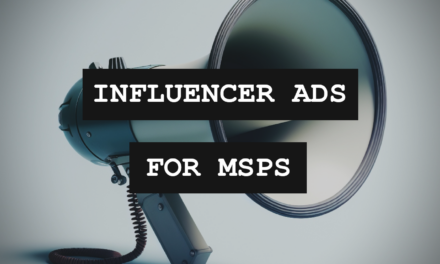What your number of target verticals instantly communicates to prospective customers
I love diners.
I know which to go to when I want to get a burger, and it isn’t the same place I’ll go to when I’m in the mood for a tuna melt. These are pretty typical items for any diner menu, but I go where I know I’ll have the best dining experience based on what each kitchen does best.
If a diner has too large of a menu, I’ll avoid going to it. A 15-page menu of “specialties” can cause more confusion than confidence – and that will lead to me grabbing a slice of pizza instead.
The same applies to the number of verticals targeted by an MSP and what they communicate to prospective customers. Making the right choices is the difference between specialization seen as a competitive advantage vs. confusing prospects. It’s a problem we tackled at Valiant in 2018, and it started with a similar “diner menu thought” from our President, Georg Dauterman:
“You don’t want to eat at a place where the shrimp is next to the pot roast.”
The thought isn’t appetizing at all. A website that lists too many target verticals can be just as off-putting to your prospects.
The Ultimate Guide To Cash Flow For Managed Services
Sponsored by Alternative Payments & Zest
What should vertical targeting express to prospects?
Vertical targeting is often the first step in B2B marketing approaches. It increases the credibility of your efforts and sends signals out that people in your target verticals will be responsive to, including:
- Companies like yours use our solutions, making us a low-risk choice
- Our solutions address needs specific to your industry; we understand the problems you face and have demonstrated experience in solving them
- We value your industry enough that we want to work with you
Targeting too many verticals presents a risk that the services offered aren’t specialized at all. Target too few and you’re likely missing out on growth opportunities.
How do I determine the best verticals for my business?
Determining how many verticals your business should target will depend on many factors that are unique to you. For example, your service area and businesses within it will influence the verticals your target, and so should your existing customer list.
When targeting verticals to express a level of specialization as a competitive advantage, start small. Pick 1 – 3 verticals to begin with, and ask the following of each:
- How important is the vertical to your business?
- How unique is the market and how much risk does it present if it disappears?
- How well do your solutions fit the vertical’s most common needs?
- Do you already have notable wins in the vertical?
- Is your sales team ready to sell to the vertical?
If you’re comfortable with the answers to each question, you’re on your way to identifying verticals that communicate why a prospect should choose you over your competition.

SPONSORED BY ZEST

















